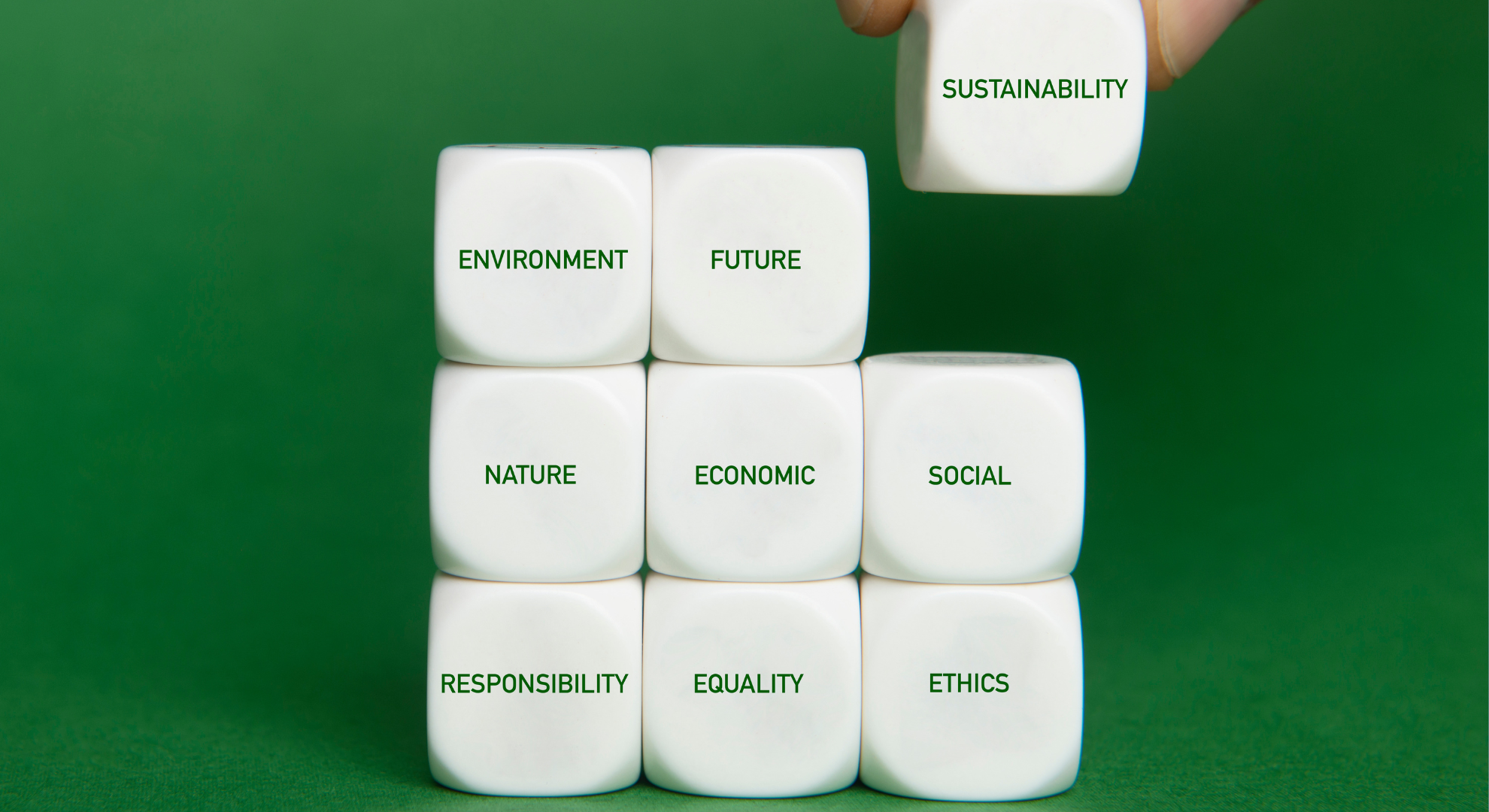CSR is an abbreviation for Corporate Social Responsibility. CSR strategies have become common in today’s corporate world as more and more companies realize that their business performance and its societal impacts are intricately connected.
That is why it is essential for companies to adopt CSR strategies and practices that enable them to optimize their performance and simultaneously benefit communities, society and environment where they operate.
There are many ways to initiate a CSR strategy, would it be through certifications, or reporting standards and frameworks, in addition to many tools available. Let’s deep dive into it.
What is corporate social responsibility?
According to the European Commission, CSR is “a concept whereby companies integrate social and environmental concerns in their business operations and in their interaction with their stakeholders on a voluntary basis.”
The idea behind corporate social responsibility is that businesses have a responsibility to benefit the society that they exist within, rather than just seeking economic profit.
A company that has a strong CSR strategy will typically have three major focus areas:
- An organizational structure that supports the implementation of the CSR strategy, including clear reporting lines for departments and employees who are involved in implementing the strategy.
- A set of policies and procedures that support the implementation of the CSR strategy, such as policies on ethical behavior, environmental sustainability, human rights, employee engagement, and communication with stakeholders.
- A systematic approach to reporting on progress towards implementing its CSR strategy through monitoring and evaluation processes (M&E).
How to conduct and implement a CSR strategy?
Conducting a CSR strategy is not a one-size-fits-all process. Understanding the impact of your organization on environmental and social criteria is crucial, therefore identifying the company’s goals accordingly, finding ways to measure them and then implementing strategies that will help achieve those goals.
It starts with a clear understanding of what CSR means to your organization. What are its core values? What does it stand for? How does it want to be perceived by the public at large?
Once you know this, you can begin to develop a strategy for communicating those values and ideas to the public in a way that will resonate with them, with reportings and initiatives.
Guidelines for tailoring an CSR Strategy for companies
1. Identify purpose and business model
Determine the overarching goal and vision for the strategy, as this purpose will serve as the guiding force for the rest of the CSR strategy.
Ask questions such as:
- What are the possible benefits and challenges of this CSR strategy?
- Which values, strengths and weaknesses should the strategy address?
- What will the CSR report be used for?
2. Identify stakeholders and open dialogue
Understand which groups will be most influential and/or impacted by potential CSR activities and reach out to them to begin a dialogue about their expectations.
3. Conduct a materiality analysis
Identify the company’s major CSR priorities:
- Which environmental, social, and/or economic topics is the organization focusing on?
- Which topics are important to stakeholders, internal and external ones?
- Where can the company make the biggest positive impact?
4. Conduct a CSR assessment
Each company has unique needs and levels of pre-existing CSR activity. Conducting a CSR assessment will help identify the company’s starting point and gauge factors such as:
- Stakeholder concerns and values
- The drivers for CSR implementation (is there a weakness that the new CSR strategy needs to address or fix?)
- The strengths and weaknesses of the company’s decision-making structure, as these will determine priorities and which areas to focus the CSR strategy on.
- Already existing CSR initiatives (should current projects be integrated or connected with the new strategy to form a more cohesive whole?)
- Timeline and resources to implement new projects
Ensure that by the close of the assessment, everyone who will be working on or impacted by the CSR strategy is on the same page in terms of current status and the needs that are going to be addressed.
Be proactive in gathering feedback from employees and other stakeholders—try to gather as many diverse perspectives as possible.
At this stage, it may also be helpful to put together a CSR leadership team.
5. Define priority areas and specific goals/commitments
Once the purpose of the CSR strategy is established:
- Set a project scope and clearly identify which key areas to focus on.
- Set a project timeline, building in time for check-ins.
- Ensure that the goals do not overreach, as failing to deliver on a stated goal may compromise credibility.
- Try to make the goals Specific, Measurable, Achievable, Relevant, and Time-based.
- Making a list of proposed actions may be helpful in conceptualizing tasks.
Once focus areas and goals have been decided, start building support among senior management and employees to secure buy-in.
6. Choose tools and/or framework(s)
Conduct research into what peers are doing. Other sources of information and reference are industry associations and organizations specializing in CSR.
Running analyses of similar case studies can provide helpful information and aid in future projections.
- What types of tracking tools might be useful?
- Which performance indicators will this strategy rely on?
- What are the benefits and drawbacks of the selected framework or tool?
7. Launch CSR initiatives
Maintain engagement with stakeholders, follow projects/programs timeline, and seek to deliver on project benchmarks.
Maintain CSR-relevant governance practices, and introduce trainings that help support CSR projects.
8. Report and verify progress
Compile data from the CSR projects into a transparent and easily understood report for communication with stakeholders.
Complete verification by employing internal audits, peer/stakeholder reviews, or third-party audits.
9. Evaluate achievements and room for improvement
Take some time to reflect on the experience of implementing and tracking a CSR project.
- What went well? What was difficult? What lessons were learned from the experience?
- What advice would you offer to a company undertaking a similar initiative?
- Is there any follow-up work to be done?
Common CSR tools and frameworks for reporting
CSR shares some frameworks and approaches with ESG, as both concepts involve sustainability reporting. Currently, one of the biggest challenges with developing a CSR approach or report is the lack of standardization.
Given that there is no mandated structure for CSR reports, corporations can select the format that best suits their message and highlight the information that they deem important to their CSR program.
In fact, an article by Harvard Business School observes that companies will create specific branding strategies for their CSR reports, leveraging the report for marketing and PR, as much as for communications. However, the lack of standards does present difficulties in comparing data and identifying areas for improvement.
Listed below are some examples of reporting frameworks and other resources that a company might consider.
CSR Guidance
CSR guidance lays out the underlying principles and baselines for corporate social responsibility.
They include:
- ISO 26000
- The United Nations’ Sustainable Development Goals (SDGs)
CSR Reporting Frameworks
CSR frameworks provide comparatively standardized approaches for reporting out on CSR activities.
Examples of frameworks include:
- The Climate Disclosure Standards Board (CDSB)
- The Task Force on Climate-related Financial Disclosures (TCFD)
- Accountability
CSR Reporting Standards
Reporting standards provide a blueprint for companies to understand and report out on their impact in a comparable and credible manner.
Some well known CSR standards include:
- The Global Reporting Initiative (GRI)
- The Sustainability Accounting Standards Board (SASB)
Certifications
CSR certifications provide proof of impact; third-party organizations can be contracted to verify a company’s commitment to CSR and outcome of activities (performance, accountability, and transparency).
Trusted certifications include:
- BCorp
- Responsibility Europe
Extra Financial Questionnaires
Questionnaires such as the CDP and Dow Jones Sustainability Index (DJSI) provide scoring methodologies and benchmarks for building financial indices.
CSR Working Groups
Working groups such as the World Business Council for Sustainable Development (WBCSD) and CSR Europe bring together sustainability and subject matter experts to help scale and otherwise support sustainability efforts.
Other Tools
There is also a wealth of other tools to aid in CSR risk assessment or impact quantification. Most of these tools tend to be topic-specific, focusing on issues such as reducing/measuring carbon footprint, or on life cycle assessment (LCA).
At apiday, we use our technology to help companies track their CSR actions and make sure they’re building a company that puts people first.
With our algorithms, you’ll be able to collect and analyze data from your documentation, your team reports, and any other sources you choose, to give you a complete picture of your company’s CSR performance.
With this information, you’ll be able to quickly identify areas that need improvement, then implement those improvements right away.
Frequently Asked Questions
Why is CSR important?
The more a company cares about society, the environment, and its employees, the more successful it will be in the long run. Customers and stakeholders turn to companies they can trust and believe in, companies that value and respect their employees keep them longer. And unsustainable practices might lead to negative PR.
What are the benefits of CSR?
A number of benefits come from CSR, including: increased brand loyalty and trust, better employee engagement and retention, improved recruiting efforts, increased sales, and better preparation for laws and regulations as there is a recent push for governments to formally require and more closely regulate such activities.
What does CSR encompass?
CSR usually includes topics that fall under the following three categories: social (e.g. DEI, career development, health & safety, etc.), environment (e.g. climate change, biodiversity, resource use, etc.), and economic (transparent supply chain, philanthropy, etc.).
Related articles
Global Reporting Initiative: What It Is and How to Do It
GRI stands for Global Reporting Initiative, and is an international independent standards organization that promotes sustainability reporting through the development of global standards for corporate responsibility, including environmental, social and governance (ESG) reporting...
Impact – What is Impact
The Corporate Sustainability Reporting Directive (CSRD) requires large businesses and SMEs to produce annual reports on their environmental and social impacts.
CSRD – What is CSRD
The Corporate Sustainability Reporting Directive (CSRD) requires large businesses and SMEs to produce annual reports on their environmental and social impacts.
Corporate Sustainability Reporting Directive: All you need to know
The Corporate Sustainability Reporting Directive is an EU regulation that will have a huge impact on how organisations report their environmental, social and governance (ESG) performance...
Sustainability – What is Sustainability
The GRI is an international independent standards organization and currently issues one of the most well-known standards for ESG reporting (GRI Standards).
Discover the latest Sustainability Recent Developments to improve your companies
Sustainability is a concept that evolves due to pressing sustainability challenges, worldwide issues, and its own concept limits. New concepts have emerged to think further and respond better to all the world’s current challenges...
GRI – What is the Global Reporting Initiative
The GRI is an international independent standards organization and currently issues one of the most well-known standards for ESG reporting (GRI Standards).
What is Materiality and Why it matters in business
Materiality is crucial for sustainability reporting because it allows companies to focus on the most important aspects of their sustainability efforts. A company can choose to report on all aspects of its sustainability program, but this would be extremely time-consuming and would probably not be very useful for investors and other stakeholders...
Materiality – What is Materiality
ESG is an acronym for Environmental, Social, and (Corporate) Governance. It refers to the non-financial factors of a corporation’s impact.
EcoVadis – What is EcoVadis rating
Created in 2007, EcoVadis provides a collaborative web-based rating platform for assessing the sustainability performance of organizations worldwide.
Impact-washing – What is Impact-washing
Impact washing can be defined as any marketing claim about a product/good/service/funds triggering a change in the real economy that cannot be supported by evidence.
ISO 26000 – What is ISO 26000
ESG is an acronym for Environmental, Social, and (Corporate) Governance. It refers to the non-financial factors of a corporation’s impact.
B Corp – What is B Corporation certification
ESG is an acronym for Environmental, Social, and (Corporate) Governance. It refers to the non-financial factors of a corporation’s impact.
The concept of impact on social and environmental issues and its implication for companies
Impact measurement is a powerful tool for companies to gauge their impact on social and environmental issues. In this article, we will discuss the concept of impact, its implications for organizations, and how it can be measured...
The most important and recent developments of ESG (Environmental, Social and Governance)
Being a B Corporation is not just about making profits and creating wealth for a company, it is a way of creating a more sustainable future for society! Discover our article about B corps and its benefits here...
The process for an enterprise to get the B corp certification
Becoming a B Corporation is an ambitious undertaking. This article will guide you through the steps required to become a B Corporation…
CSR – What is Corporate Social Responsibility
CSR is centered on the idea that businesses have a responsibility to benefit the society that they exist within—a broader view than the one that says businesses’ only responsibility is to produce economic profit.
What is a B Corporation: what this means and its benefits for companies
Being a B Corporation is not just about making profits and creating wealth for a company, it is a way of creating a more sustainable future for society! Discover our article about B corps and its benefits here...
The guide to EcoVadis certification: frequently asked questions
This guide will take you through the steps of the EcoVadis Certification process, and explain what is involved in becoming a certified business...
The implications of ISO 26000 for companies
ISO 26000 is a standard providing direction for the application of social responsibility to the activities of an organization. But what does this mean? And how can organizations use it to create better and more sustainable business practices? Let's talk about it…
ESG – What is Environmental, Social and Governance
ESG is an acronym for Environmental, Social, and (Corporate) Governance. It refers to the non-financial factors of a corporation’s impact.
4 reasons companies should adopt CSR, Corporate social responsibility
CSR is all about managing a company’s externalities while creating sustainable value for stakeholders and continuous innovation for the business. Let's break that down and explore why...
Carbon disclosure project reporting: what is it and how does it work?
Read our article about The Carbon Disclosure Project (CDP), an extra-financial questionnaire that collects data on companies’ environmental practices and performance...
What are the differences between Corporate Social Responsibility (CSR) and Environmental Social Governance (ESG)?
These terms are both used to describe an approach for businesses to integrate social and environmental factors into their governance policies, strategies, processes, and programs. Yet, they're not the same. Let's explore their key differences...
Why is ESG (Environmental, Social and Governance) important for a business
ESG (environmental, social and governance) can help businesses make sound decisions, and investors achieve better long-term returns. Let's discover how...













